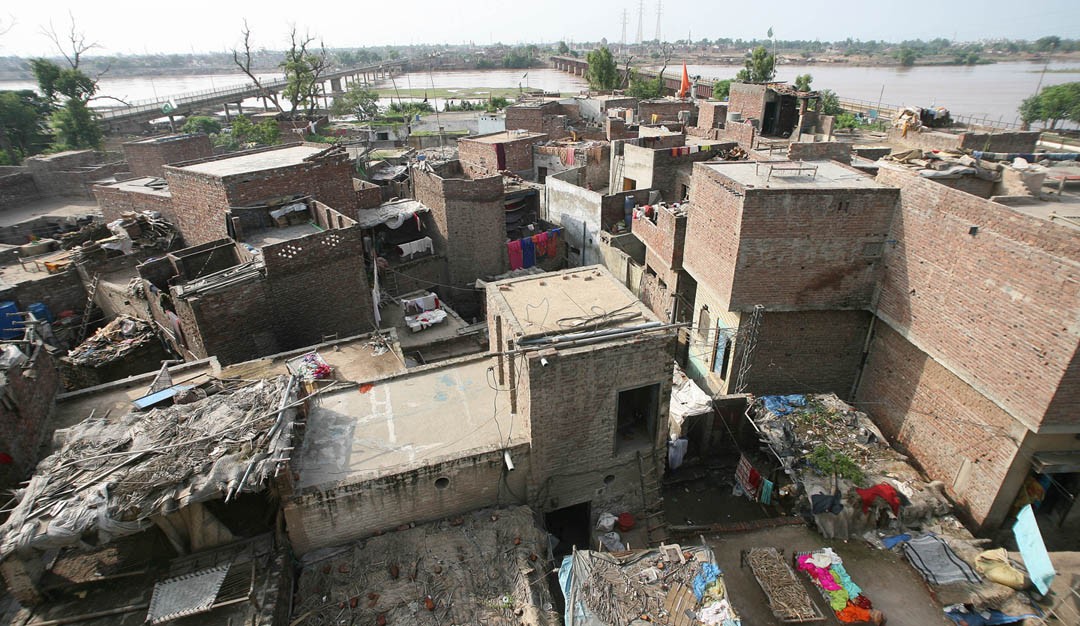
The Constitution of Pakistan guarantees the right to life and shelter but the state has withdrawn, leaving the issue of housing at the mercy of mostly private developers

Converting agricultural land into housing societies is becoming a prominent feature of Pakistan’s urban landscape, roughly for the past two decades. Apparently, these housing projects -- mainly undertaken by private builders and a few by the government -- are catering to the housing needs of the country’s increasing urban population.
Experts believe it is more about doing business than about a fair planning for housing needs. Respective governments have not shown any interest in fulfilling the need of housing for those who cannot afford. Private builders have clients who can afford the prices or already have a house.
Urban planner Reza Ali says that almost every city with more than 100,000 people is expanding. "And suburbs are converting into densely populated zones because of unavailable land in the cities. Private schemes are catering to the needs of customers who can afford to buy land and construct houses."
According to an estimate by the International Housing Finance Programme, housing shortage in Pakistan goes up by nearly 300,000 units every year. The data available about housing needs and ownership is still projected from indicators revealed by the Population Census of 1998 which, according to estimates, is currently around 7-8 million units. While, after a long time, a five-year National Housing Policy is in the final stage.
Ali confirms that after a long time the federal government is working on a new housing policy. "A draft is supposed to be completed soon. However, it is worth mentioning that no housing policy catered for the need for housing for the poor or those who cannot afford. Measures for housing schemes for poor are not satisfactorily addressed in any housing policy."
A World Bank (WB) report in 2010 highlights a shortage of 7.6 million housing units in Pakistan. This makes more than half of the country’s urban population to live in slums.
The total available housing units in the country are 20.5 million, according to this report. The report says the average national occupancy rate per dwelling is above six persons and density per room is 3.5 people, against the international standard of 1.1 per room. The WB report suggests to the government that it should strengthen property rights and land administration process in collaboration with private sector. It also highlights the need to have a property development framework, support the building industry, facilitate the growth of primary and secondary housing finance markets, and introduce useful targeted housing finance programmes.
Read also: “The role of the state has changed from a provider to a facilitator,” says Dr Noman Ahmed
"The biggest challenge for people is affordability. We have to understand how many people can afford ownership of house at available prices. As per previous census and current estimates, in Pakistan as many as 80 per cent families own a house. Hence, ownership is taken as a sense of security for families and children; that is why we see less rent-based projects and schemes in the country," says Reza Ali.
A recent study on the real estate in Pakistan by the Ministry of Commerce shows that the trend of urbanisation in the country began in the 1950s and 60s. "Pakistan adopted green revolution technologies in the agricultural sector and also opted for large-scale industrialisation. As a result of these two factors, there was massive rural-urban migration (majority of these belonged to the lower-income group). The scale of migration was too large for the State to manage and so, instead of building houses, the state decided to adopt the site-and-services concept," the report says.
A housing census was conducted in 1980 and, again, in 1998. The census showed major differences in the housing conditions of urban and rural areas, and also between housing conditions in different provinces of Pakistan. The data of population censuses reveals that the number of total housing units has increased from 7.8 million in 1960 to 12.6 million in 1981 and further increased to 19.3 million in 1998.
This means that 19.3 million housing units accommodate a population of 131.5 million in 1998. Housing stock has increased by about 2.5 times, whereas population has increased three-fold during the four decades. Urban population grew more rapidly (3.8 per cent) than the urban housing stock during 1981-1998.
Experts call for focusing on strengthening local government tier to take administrative steps to increase availability of affordable land.
Ali says the Constitution of Pakistan guarantees the right to life and shelter and housing is considered among the basic needs of a person. "Technically, it is possible to meet the housing needs of the people through planning and better execution but the state has to intervene in this subject directly or indirectly."
"The basic issue in providing housing for all is transfer of asset. The state needs to evolve policies and mechanisms by getting land from those who own it and provide housing to those who cannot afford through better policies and execution," he says.
"Asset ownership inequality is a major challenge in providing housing to people in urban hubs. Without making such policies by the state, nothing is possible. Otherwise, private developers would continue to expand their business and genuine needs would not be fulfilled," concludes Reza Ali.